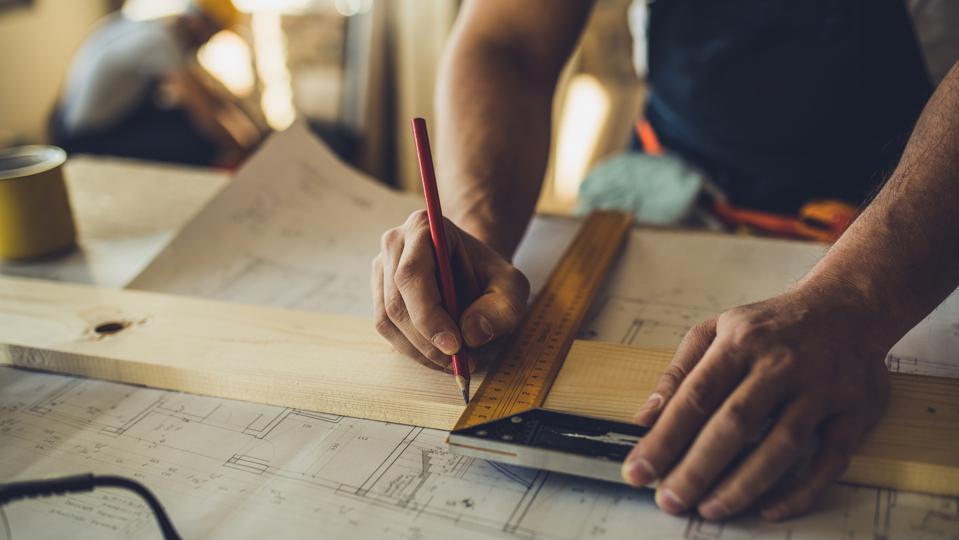Editorial Note: We earn a commission from partner links on Forbes Advisor. Commissions do not affect our editors’ opinions or evaluations.
If you’re eligible for a U.S. Department of Veterans Affairs (VA) home loan and you’re willing to buy a fixer-upper, a VA alteration and repair loan can provide the necessary financing to purchase the home and make repairs.
You can use this loan type to rehab or modify a property you’re purchasing or one you already use as your primary residence.
How VA Renovation and Rehab Loans Work
A VA rehab loan is a unique program that some lenders offer. You can either roll the alteration and repair loan into a VA purchase loan when you buy a property or include the loan in a cash-out refinance and use the funds to renovate your home. You still receive VA benefits like no down payment and no mortgage insurance premiums.
This type of loan may be helpful if you can’t afford a turnkey property, but you find one within your budget that just needs some work.
Loan Limits
The VA doesn’t set a maximum loan limit. Instead, you may borrow up to the “reasonable value” of the property, which an appraiser establishes. However, lenders may limit how much you can borrow.
The loan limit also depends on the acquisition cost, which includes the purchase price plus repairs, and how it compares to the as-completed value. Your loan amount might be reduced if the home purchase price and estimated repair costs are lower than the estimate.
For example, let’s say you’re buying a home for $200,000 and plan to spend $50,000 on repairs, and the appraiser sets your home value at $300,000. The lender will likely use the lower amount—$250,000—as your loan limit.
Your lender may also let you roll the closing costs, such as the VA funding fee, into the loan total.
VA-approved Contractors
You can choose your contractor or builder, but they’ll need to register with the VA and receive a VA Builder ID number. Your lender may set other requirements, too, such as ensuring the builder is licensed and insured.
Additionally, the contractor will need to complete the repairs within 120 days—so you can’t take the DIY approach to save money and have a flexible timeline.
Like similar home renovation or construction loan programs, there will be a series of inspections and loan distributions as the planned work progresses.
VA Renovation Loan Qualifications
Here’s a basic overview of the minimum borrower and property requirements.
Minimum Borrower Requirements
Once you request your VA Certificate of Eligibility (COE), you can apply for a VA purchase loan or a VA cash-out refinance.
If you’re refinancing an existing VA mortgage, you may be able to restore your entitlement because you are paying off the current loan.
While the VA doesn’t set minimum credit requirements, most lenders require a credit score of at least 620. Other eligibility guidelines also apply; for instance, you must show income history and a satisfactory debt-to-income (DTI) ratio.
Minimum Property Requirements
The property must be a primary residence and can either be currently occupied by the borrower or will be after it’s purchased and the prescribed repairs are finished.
An appraisal will verify that the property is “safe, structurally sound and sanitary.” The appraiser can recommend necessary repairs to comply with the VA’s minimum property standards.
Eligible Repairs and Improvements
You can use your loan funds to complete a host of repairs that can improve the livability and condition of the property and the final appraisal value.
Some examples of repairs and alterations include:
- Energy-efficiency improvements
- Mold or lead paint removal
- Repair or replacement of doors, windows, roof and gutters
- Electrical, HVAC or plumbing repairs or replacements
- Flooring
- Home weatherization
These suggested repairs must be in line with similar properties to qualify for funding.
Cosmetic improvements like adding an outdoor patio or a swimming pool are ineligible. In addition, major repairs that cannot be completed within the 120-day window may also be disqualified.
Pros and Cons of a VA Renovation Loan
Here are some advantages and disadvantages of repairing a home with a VA rehab loan.
Pros
- VA-backed purchase home loans and cash-out refinances qualify
- Many repairs and improvements qualify
- No down payment is necessary
- Can be cheaper than buying a turnkey property
Cons
- Builder or contractor must register with the VA
- Borrowing limits for repairs apply
- All work must be completed within 120 days
- Not all VA lenders offer this product
How To Apply for a VA Renovation Loan
You can follow these steps to get approved for a VA home repair loan:
1. Gather initial documents. Collect the paperwork you’ll need during the process, such as your COE, proof of income, tax returns and your property details.
2. Compare lender quotes. Getting quotes from several of the best VA loan lenders can help you find a competitive rate. However, you’ll need to make sure the bank or credit union offers this special type of loan.
3. Schedule a home appraisal. An appraiser will assess the property’s condition and recommend qualifying repairs and improvements.
4. Receive repair estimates. Your lender will work with registered contractors to receive cost estimates to calculate the as-completed property value and your loan amount.
5. Complete repairs and inspections. All prescribed repairs and property inspections will occur within 120 days after the loan closing date.
VA Renovation Loans vs. Other VA Loans
A VA renovation loan includes funding for necessary repairs to improve the livability of a veteran’s primary residence. Other VA loans may not disburse as much money for repairs, and more restrictions may apply to how you can use the proceeds.
Other Options for a Renovation Loan
These loan options can provide more flexibility while providing the funds you need to improve your home.
VA Cash-Out Refinance
A VA cash-out refinance allows you to tap your home equity and use the money to complete the repairs yourself. This allows for more flexibility, so you can use the money for repairs that might not qualify for the repair loan. Additionally, you can perform the work yourself. It’s possible to borrow up to 100% of the appraisal value plus the costs of energy-efficiency improvements and the VA funding fee.
VA Supplemental Loan
Existing homeowners may also consider a VA-insured supplemental loan, which is a second mortgage similar to a home equity loan or a home equity line of credit (HELOC).
You can use the proceeds for alterations, improvements or repairs to improve the home’s livability. In addition, up to 30% of the loan proceeds can be used for non-fixtures and quasi-fixtures like refrigeration, cooking, washing and heating equipment.
FHA 203(k)
An FHA 203(k) loan lets you use your funds for more purposes, including substantial repairs that can include razing and rebuilding a home on the same foundation. In comparison, the VA renovation loan doesn’t permit this type of work or other significant remodeling.
You can also borrow up to 110% of the home’s appraised value, providing more funding to complete your desired repairs and improvements. The borrower eligibility requirements can be easier to qualify for, but you can have more ongoing fees, such as mortgage insurance premiums (MIP).
Fannie Mae HomeStyle
A Fannie Mae HomeStyle Renovation loan is a better option if you want to improve an investment property or a primary residence with multiple units. The program lets you choose any licensed contractor.
The standard Fannie Mae eligibility requirements apply, which can be stricter than the VA guidelines. Another drawback is that you can only use up to 75% of the acquisition costs or the as-completed appraisal value, whichever is lower.
Faster, easier mortgage lending
Check your rates today with Better Mortgage.
Read the full article here














